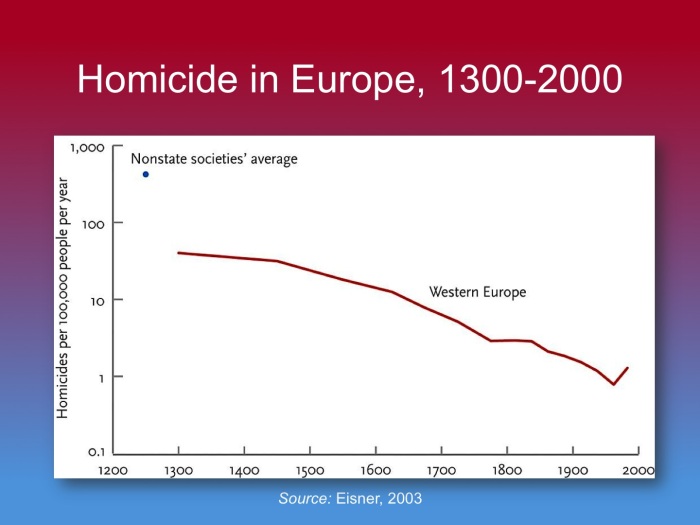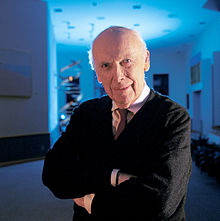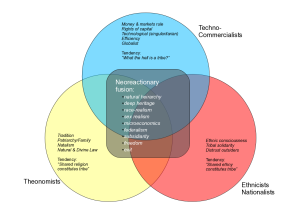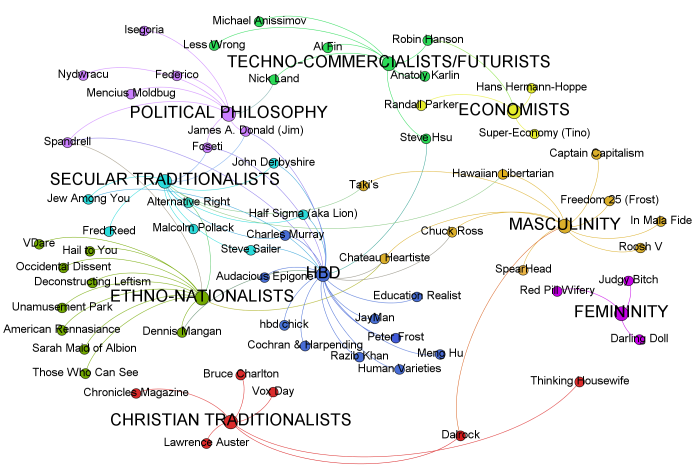If reading about CVTs (canine venereal tumors) makes you want to wash (even though as a non-dog you are very unlikely to catch a dog-specific cancer/STD,) reading a lot about AIDS will basically make you want to wash with bleach, then wash again.
‘Patient Zero’ and the early days of HIV/AIDS This is the main source for the quotes in this post; quotes from other sources will be noted as they come up.
I know nothing about this particular source/forum, but they have compiled a bunch of excerpts from doctors and the like about the early days of AIDS (70s and 80s), and it’s pretty freaky.
Conclusions:
1. The past is a freaky place. I mean, it is just plain weird.
2. CA past is especially freaky.
“I’ve been spending some time researching some history in respect to California during the 1960s and 1970s and it has taken me through events like the Counterculture, Occultism, cults like the Manson Family and Jim Jones’ Peoples Temple, the proliferation of serial killers during that time, and the exploding population of homosexuals in San Francisco and the role they played in spreading HIV.”
Right, that stuff. WTF, California?
I get the impression that liberalism in the 60s and 70s included far more drug use and far more sex with children than it does today, in ways that are difficult for those of us who didn’t live through it to imagine, particularly since the latter is now totally taboo. Today it is perfectly normal to be a liberal and have no interest at all in drugs; in the 60s and 70s, I suspect such a person would have been largely out of place. Eventually the War on Drugs and public education campaigns probably had some effect, but I suspect the crack epidemic of the inner cities transformed “drugs” in people’s minds from something rich, white college kids did to something poor blacks did, which made them way less cool.
Likewise, I get the impression that norms for sexual behavior were totally in flux; the “radical feminism” of the later seventies and eighties that was (is) so vehemently concerned with rape and child rape (causing at least some substantial legal changes on the subject) seems to have been an actual reaction to what we would now call “rape” and “child rape” but which was not particularly regarded as such during the earlier period. So now we have the problem of notable figures from the period like SF/F superstar Marion Zimmer Bradley and her husband raped and abused small children, including her own daughter:
” The first time she molested me, I was three. The last time, I was twelve, and able to walk away.
I put Walter [MZB’s husband/the speaker’s father or stepfather] in jail for molesting one boy. I had tried to intervene when I was 13 by telling Mother and Lisa, and they just moved him into his own apartment.
I had been living partially on couches since I was ten years old because of the out of control drugs, orgies, and constant flow of people in and out of our family “home.”
None of this should be news. Walter was a serial rapist with many, many, many victims (I named 22 to the cops) but Marion was far, far worse. She was cruel and violent, as well as completely out of her mind sexually. I am not her only victim, nor were her only victims girls.”
From what I have read, MZB and her husband operated completely out in the open, sometimes molesting other people’s children right in front of them, and no one cared, no one did anything about it. “Those were just the times.” You may find that attitude unbelievable, but there it is.
This is rather problematic because, aside from having been a popular and prolific writer, MZB was a lesbian and feminist writers whose works have been credited with literally saving their readers’ lives, and now her fans have to go wash themselves with bleach.
Shit changes. The past is not the present. The past is often highly alien.
3. Social trends were not invented yesterday.
We often act like they were, like we’re the first people to ever hop onto a particular bandwagon and begin advocating for Issue X, even when people have been protesting about X for decades. I first noticed this habit back when I was young enough to not hate college students.
In this case, we have a tendency to imagine that “the past” (anytime prior to last Tuesday, more or less, was a terrible time for gays. Truth is, though, that huge numbers of gay people moved to NY and SF, where they lived as they wanted without interference. Yes, it sucked to spend 4 years of one’s life stuck in a highschool in rural Texas, but you could then spend the rest of your life elsewhere, which isn’t so bad when you remember that virtually no one wants to stay in rural Texas.
“Well, number one was the baths, because we knew that was the main source of AIDS transmission. A gay man could pick up one or two partners in a bar, and they’d go off someplace to have their fun. There were back rooms in the bars, in the baths, too. They were called orgy rooms, where ten, fifteen, twenty, thirty, forty men were dancing around with almost no light, and of course, anything happened there. That explained to us why a gay man would say, “I don’t know who I got it from. I never saw his face.” That sort of thing.
The bars were not the best places to be, but at least, they would limit the amount of contact a man could have. In a bookshop, in a small sex club, out in the park–these places limited the contact. But in the baths… At a four-story bathhouse, Club Baths south of Market I think it was, 350 men would gather on a Saturday night at $10 a crack, and they got their $10 worth. And more. Including drugs in addition to poppers.”
“Now, there were gay men who were aggressively out, the S&M, sadomasochist, men, the leather boys we called them, who walked up and down Market Street dressed in leathers with leather caps like the old Nazi men, and chains, and leather boots.”
“Of the little over 300,000 voters in the city, about 120,000–100,000 let us say–were gay voters.”
From AIDS and Immune Systems: “For me, gay life in New york City before the dawn of AIDS was like living in the Promised Land. I went dancing almost every night. There were always exciting places in Manhattan to see and be seen, night-and-day sex at the piers off West Street, backroom bars and sex clubs that were packed till dawn. Whatever fantasy you had, you always knew you could satisfy it any time, night or day, at one of the many sexual playgrounds …
Urban gay male life had evolved over a decade from personal salvation into a communal identity and now, as the Saint [a famous disco] became our weekly Mecca, into a quasi-religion. Several thousand muscled, shirtless gay men in black 501 jeans … Upstairs was a huge darkened balcony converted into carpeted bleachers where hundreds of stoned men fucked all night and into the day.
To lose oneself so completely in the wall-to-wall men moaning in the dark … soaring on a hit of ethyl chloride … was like being transported to some heavenly other planet somewhere beyond the stars.”
“For those unfamiliar with the name: Christopher Street is in Manhattan’s West Village. During the pre-AIDS gay-party days, it was Ground Zero for homosexual cruising and partying.
If Fire Island was acres of beef on the hoof, Christopher Street was Mardi Gras in New Orleans, only with fewer inhibitions and without a female to be seen. One club or bar after another … Each establishment, and the street itself, filled with exuberant gayguys in freaky costumes … Music, drugs, and booze everywhere … Carousing of a pitch that would put beer-drinking Spring Break jocks to shame …”
On trying to fight AIDS:
“Well, the battle to close the bathhouses began to simmer then, but we were aware of the problem and trying to do something at least sub rosa to diminish it long before that in fighting the STD diarrheal diseases there. In ’82, we were aware of Gaetan Dugas [“AIDS patient zero”] and the connections between him and so many people that he met here in San Francisco at the baths, and his open announcement that, “Well, I’m off to the baths tonight, and there’s nothing you can do about it.” He came to my office and said, “It’s my right to go where I want to.”
We were becoming reasonably sure that this was a disease caused by a transmissible agent. It seemed to be concentrated in gay men who were very sexually active. (I’m leaving out the question of the hemophiliacs.) The place where they could be most sexually active, most traumatically active, was in the baths.
…
Well, Silverman met with the bath owners–fifteen or twenty men. I was there. It was a hot meeting. Silverman tried to be politic, calm. He was a very, very good administrator and a good public health man. But these people came primed for battle. He tried to explain the difficulties and that if they could at least tone down the opportunities for infection, raise the level of lighting in the “orgy room” where 100 men could have indiscriminate contact without even knowing who they were being in contact with, if they could take the doors off the cubicles, cut down the privacy a little tiny bit– They wouldn’t have it.”
“The pervasive argument that turned around even the strongest gay backers I had for closing the bathhouses was, if government closes the bathhouses in San Francisco, which is seen as this bastion of gay liberation, what message does that send to less liberal states and communities? And then the next step is, well, obviously people get picked up in gay bars, so you close the gay bars. And then the sodomy laws would either be enforced or reinstated, depending on what the status was in any given state.
I remember having one very important person in the gay community who had been supporting me for bathhouse closure, who had been active in politics and still is, call me up and say, “Merv, I can’t support you any more.” I said, “Why?” And he gave me the above argument.”
More on Gaetan Dugas, the guy who proved AIDS was infectious by giving it to everybody:
“I knew that Gaetan Dugas was still in town. I couldn’t get to him, but I put word out, “If you see Gaetan Dugas, let him know I want to see him.” He came up. I told him, “Look, we’ve got proof now.” I didn’t tell him how scientifically accurate the information was. It wasn’t inaccurate, but it wasn’t actually scientifically proven. I said, “We’ve got proof that you’ve been infecting these other people. You’ve got AIDS, you know. We know it’s transmissible now, because you’re transmitting it.” He was the active partner in all this gay business, anal-genital sex. “You’ve just got to cut it out.”
“Don’t be silly, I won’t cut it out. It’s my life. I’ll do what I want.” I said, “Yes, but you’re infecting other people.” “I got it. Let them get it.” I said, “You’ve got to cut it out!” “Screw you.” He walked out. I never saw him again. It was a pity, because he was apparently an intelligent man, except on this one point. And he was very, very sexually active. He was a presumptive proof that AIDS was something transmissible from an infected person directly to the uninfected person.”
“It was at this time that rumors began on Castro Street in San Francisco about a strange guy at the Eighth and Howard bathhouse, a blond with a French accent. [Gaetan Dugas] He would have sex with you, then turn up the lights in the cubicle, and point out his Kaposi`s sarcoma legions.
“I`ve got gay cancer,“ he`d say. “I`m going to die, and so are you.“”
Amazingly, no one seems to have thought of hauling him out into the desert and shooting him.
“In ’78, there were already 4 percent infected. When we went back retroactively and tested the bloods of the hepatitis B vaccine trials, 4 percent of them were already HIV positive. We didn’t even know there was such a thing as AIDS then. By ’84, 60 percent to 70 percent of a gay population was infected. Now, the general population of males in the city, by the time I retired [1984], was less than 1 percent infected.”
These are not people whose activities were being curtailed by social norms.
BTW,
“Craigslist’s entry into a market results in a 15.9 percent increase in reported HIV cases, according to research. When mapped at the national level, more than 6,000 HIV cases annually and treatment costs estimated between $62 million and $65.3 million can be linked to the popular website, the authors state.”
“”It was like living through a war,” remembers longtime congregant Sharyn Saslafsky. “Our world went upside down and inside out. So many of our friends died young.”
“I remember the devastation of hearing the names on the Kaddish list of young people,”… “During the service, everyone stands, links arms and sings ‘Hinei Mah Tov.’ I remember the utter sadness when there were people we couldn’t put our arms around anymore.”
“You were on call 24/7,” he says. “There was no easing up. Every day there were more casualties and, as things progressed, more fatalities. Until things started to taper off, I and an awful lot of my friends were losing, on average, a friend or acquaintance once a week for probably five years.”
At High Holy Days, he found himself unable to utter out loud the U’netaneh Tokef prayer, which reads in part, “On Yom Kippur it is sealed … who shall live and who shall die … who by earthquake and who by plague.””
4. Unfortunate confluence of “liberation” and “identity”
Gay people catch diseases when they have sex with a bunch of unprotected partners. So do heterosexuals, eg, prostitutes in Kinsasha in the 20s. Gay and straight people who don’t engage in such behaviors don’t catch a ton of diseases. The solution to AIDS is actually trivially simple: don’t have sex with thousands of people.
Unfortunately, “have unprotected anonymous ex with thousands of people” was a core part of the gay scene, and people protected it as part of the expression of their identities:
“I estimate I’ve had approximately 3,000 men up my butt … I estimate that I went to the baths at least once a week, sometimes twice, and that each time I went I had a minimum of four patners … I also racked up about three men a week for five years at the Christopher Steet bookstore …Then of course there was the MineShaft; the orgies; the 55th Street Playhouse; the International Stud backroom …
Let me present my own history of STDs. From 1973, when I came out, to 1975, I only got mononucloeosis and non-specific urethritis, or NSU. In 1975, I got my first case of gonorrhea. Not bad, I thought. I’d had maybe 200 different partners, and I’d only gotten the clap twice. But then, moving from Boston to New York City, it all began to snowball.
First came hepatitis A in ’76 and more gonorrhea and NSU. In 1977, I was diagnosed with amebiasis, an intestinal parasite, hepatitis B, more gonorrhea, and NSU. In 1978, more amebiasis and my first case of shigella, and of course, more gonorrhea. Then in 1979, hepatitis yet a third time, this time non-A, non-B, more intestinal parasites, adding giardia this time, and an anal fissure as well as my first case of syphilis … By 1981, I got some combination of STDs each and every time I had sex …
At age twenty-seven I’ve had: gonorrhea, syphillis, hepatitis A, hepatitis B, and hepatitis non-A, non-B; intestinal parasites including amebiasis, e. historicia, shigella, giardia; herpes simplex types one and two; venereal warts, mononucleosis, cytomegalovirus, and now cryptosporodiosis, for which there is no known cure.”
Again, if getting sick “built up the immune system,” these guys would have had the immune systems of doom and AIDS would not exist.
“I can recall about that same time seeing a patient who was a young Ph.D. scientist from the Peninsula [south of San Francisco], a very good-looking man with Kaposi’s sarcoma who I was caring for. He had AIDS. He was sitting in my clinic on Parnassus. He was kind of impatient. I said, “I’m sorry I’m running late; I can tell you’re impatient. What’s wrong?” He said, “I wish you’d hurry up; I’m going to the bathhouses.” My reaction was, “Wait a minute.”
…
But being the typical doctor, it just never occurred to me that he was still out there having sex. He had Kaposi’s sarcoma–AIDS, this horrible new, fatal disease. My line to him was, “Somebody must think you’re smart, because they gave you a Ph.D. How come you’re still going to the bathhouses?” He said, “There’s nothing wrong with that. I probably caught it there, and so my view is, it’s there and I’m going to have sex.” I said, “Are you telling the people that you’re having sex with that you’re HIV-positive”–it wasn’t even called HIV then–“that you have AIDS?” He said, “No. I figure that they ought to be smart enough to understand that there’s AIDS out here, and that they can catch it. It’s their responsibility as much as mine.” I think that that, more than any other single event, called into focus for me the notion that someone needs to speak out.”
Haiti got AIDS from Americans, not Africans:
“there had been in 1977 a conference of gays in Haiti, and a lot of gay people had come down from New York for this conference. After all, Haiti was a great spot for gay vacations. The poverty there had lots of young boys acting as prostitutes.”
5. over-trust in medicine/technology
” From what I’ve seen already, these guys had a shitload of venereal diseases already swimming through their systems and were on all sorts of illegal drugs, plus a lot of penicillin. There is no way that these weren’t co-factors in what later became AIDS. In NYC, there were gay doctors that were going to Fire Island and stocked up with penicillin and were shooting it into themselves and their friends before they went out to parties and got high.”
Remember, we had only recently–within a few decades–gone from a society where many people still used outhouses, had no running water or electricity, no cars, etc., to winning WWII, exploding atomic bombs, the Polio vaccine, rural electrification and running water for everyone, cars and highways, contraceptives, microwaves and men on the moon. It’s not unreasonable that people thought they lived in a time of truly unlimited scientific progress and that science could cure all problems and all of the old social norms could be discarded. Then AIDS hit like a terrifying brick to the face. We can’t even cure the common cold, you know.
6. disease as a badge of honor (still ongoing):
2blowhards source:
“Even so, the health of this crowd pre-AIDS was surprisingly awful. I recall — and Berkowitz confirms — that gay scenesters in the late ’70s often considered sexually-transmitted-diseases to be honorable battle scars: proud signs of their sexual prowess, defiant medals that they’d earned fighting for “liberation.” Just as The Pill was assumed to have ended all worries about pregnancy for straights, medicine was assumed to be capable of dealing with no matter what infection. Scene-making gayguys often had doctors specifically to deal with their STDs — they called them their “clap doctors.”…
“I was really getting into being fucked at the baths on Ecstasy,” he writes. “The drug just obliterated all my inhibitions. But I got gonorrhea after every single trip.” …
When I went on my Christopher Street tour, everyone seemed to be high. Poppers especially were everywhere; you crunched little glass vials beneath your feet as you walked along the sidewalk. Berkowitz: “I did a quick mental inventory of my poppers usage. But the question that came to mind wasn’t how much I’d done, but rather, if I could remember the last time I had an orgasm without them.”
…
He also recalls a German film from the era: “Taxi Zum Klo,” or “Taxi to the Toilet.” The film — a gay arthouse hit –was about a swashbuckling gayguy… whose sex drive can’t be stopped. The film was meant to be charming and naughty, and it was taken that way by the NY Film Festival audience I saw the film with…
In the film’s comic setpiece, the hero, hospitalized with hepatitis, is feeling horny. He knows he shouldn’t … But he can’t help himself … He breaks out of the hospital, finds a sex partner at a public toilet, and gets himself blown. I watched the scene thinking, “Lordy, this guy is public health enemy #1.” The audience around me, though, cracked up and applauded.”
From the main source:
“In spite of extraordinary research breakthroughs and new effective treatment and prevention, the HIV epidemic continues to chug along. There are 50,000 new HIV infections a year in the United States – a steady flow unchanged since 2007 (the peak was 130,000 a year in the mid-1980s). And the reasons are not so much medical as they are behavioural, psychological and cultural.
The US Centers for Disease Control and Prevention (CDC) recently announced that if HIV infections continue to rise at current rates, half of young gay men will have HIV by the age of 50. Infections have been increasing among young men who have sex with men, especially young, black men. Emory University in Atlanta, Georgia, reports that a black gay or bisexual man in Atlanta who becomes sexually active at age 18 now has a 60 per cent chance of becoming HIV-positive by the time he turns 30. Nationwide, condom use is steadily dropping and unprotected anal sex is increasing. New HIV infections have proved similarly resistant in Europe and Asia. There are still 6,300 new HIV infections a day worldwide.”
If you really want to bleach yourself forever, go read about “bug chasing”.



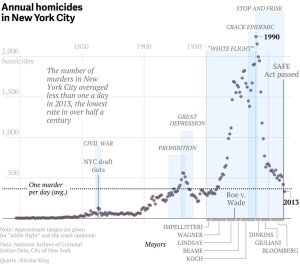 The passage of various anti-discrimination and subsidized housing laws (as well as the repeal of various discriminatory laws throughout the mid-20th century) lead to the growth of urban ghettos, which in turn triggered the crime wave of the 70s, 80s, and 90s.
The passage of various anti-discrimination and subsidized housing laws (as well as the repeal of various discriminatory laws throughout the mid-20th century) lead to the growth of urban ghettos, which in turn triggered the crime wave of the 70s, 80s, and 90s.



